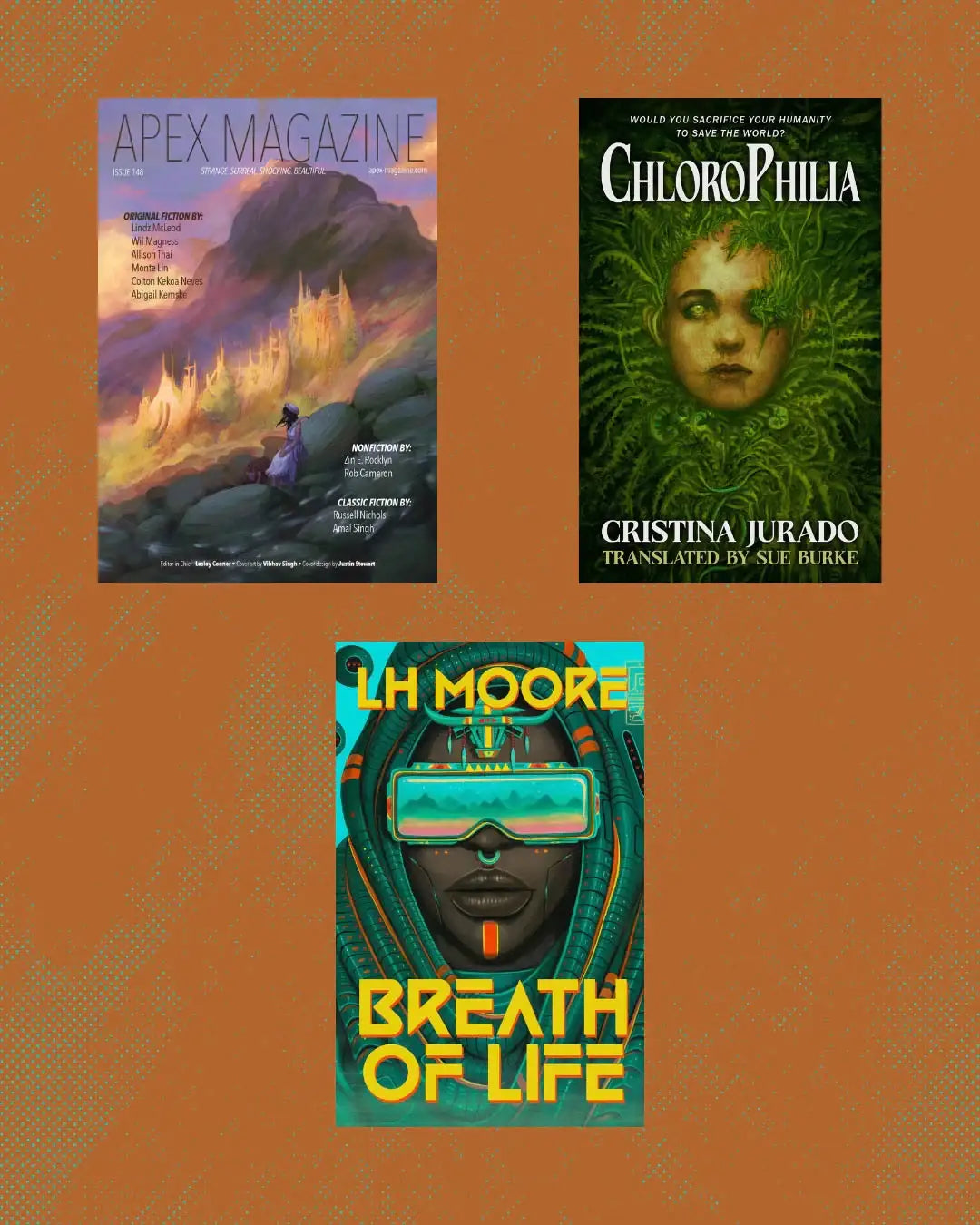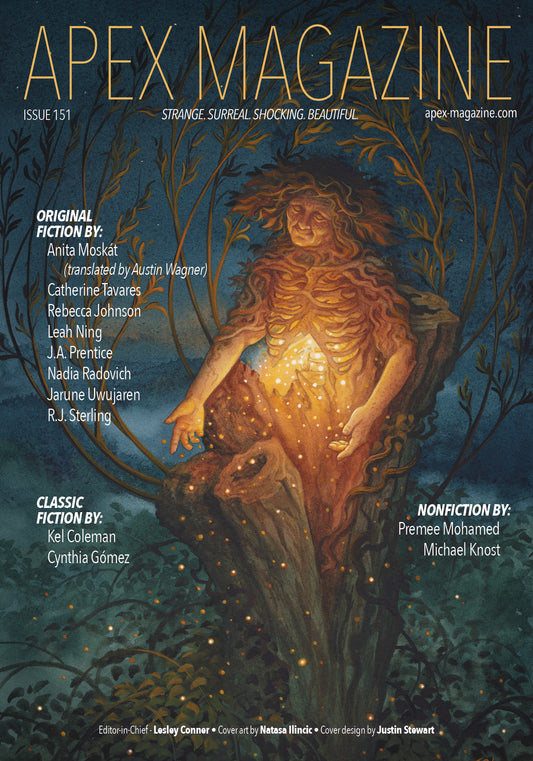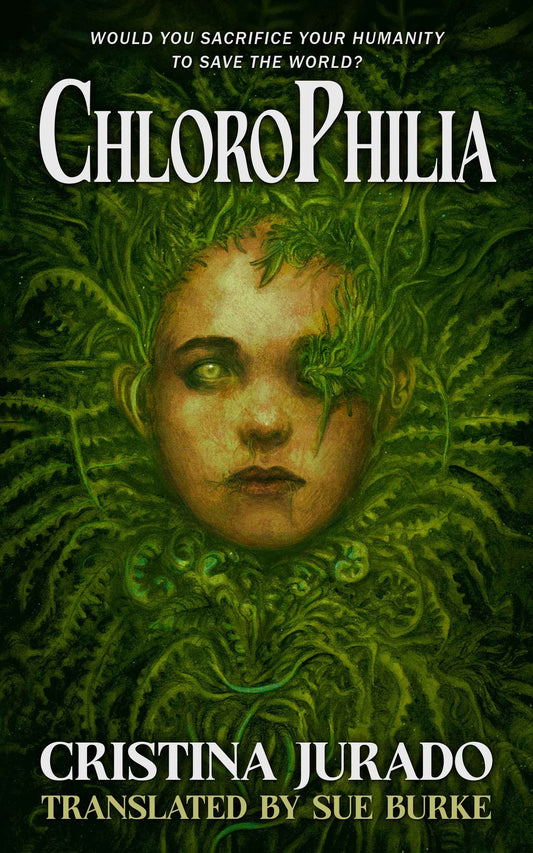
Welcome to April’s “Words for
Thought.” I have mixed emotions writing this month’s column, and fittingly
enough, this month’s stories all explore the mixed emotions of hope and
despair. As most folks know by now, Apex Magazine
is going on indefinite hiatus. While I completely understand the reasoning
behind taking a break, and look forward to reading the anthologies,
collections, and novels coming out of the book-publishing side of Apex, Apex Magazine will definitely be
missed. Thank you to Jason, Lesley, and the entire Apex team for giving “Words
for Thought” such a fantastic home for nearly three years! It’s been an honor
being part of the Apex family.
Before
the World Crumbles Away by A.T. Greenblatt, in the March/April issue of
Uncanny, falls into a subgenre I
really enjoy—the quiet apocalypse story. There are no zombies, or massive,
world-shattering events, just the inevitable erosion of the world as we know it
through a series of climate change-induced earthquakes. Against this rather
bleak backdrop, Elodie and Marina meet and tentatively begin a relationship.
Marina is a painter, Elodie an inventor, and each has differing views on what
the end of the world means.
The painter has left the lovers’ faces blank. She’s glossed over
the tension in their shoulders. She’s included the families in the distance,
trying to have a carefree night by the lake, but she didn’t include the long
cracks in the ground.
Is there any hope left? Can anything they do have meaning?
Is there any point in seeking joy when everything is going to crumble? As the
two try to find their way toward each other and a common ground on which to
build a relationship, both characters also face their own individual struggles.
Marina is trying to make enough money to get her brother out of the massive
debt he owes to some very unsavory people—money he only borrowed to help her
get optical implants to assist with her impaired vision. Meanwhile, Elodie is
working on creating an AI to act as a caregiver in emergency situations, taking
care of children in an increasingly dangerous world. Elodie and Marina’s relationship
feels real and grounded. Both the places where their stories intersect, and
where they take their own journeys, have distinct and satisfying arcs. The
story is beautifully-written, too. Mirroring the characters’ internal
struggles, Greenblatt’s striking imagery creates moments of wonder and hope
amidst the despair.
Treading Water
by Tapanga Koe, from Capricious Issue
Eleven, offers up a lovely metaphor for its main character’s experience of
queerness. Peter hides tentacles inside his skin, writhing and desperate to get
out. He’s terrified they’ll emerge at work, or in some other public location,
and more specifically, he’s terrified of how people will react once they see
the “monster” inside him.
So far, blessedly, the charade has held.
Despite his secret tentacles – ever-churning just beneath the surface of his
skin – he manages to soothe and quiet his thoughts, dampening them to whispers;
keeping up his pleasant, ordinary appearance, maintaining his careful,
deliberate words. Though it is exhausting, he has managed to remain anonymous –
forgettable – to slip through life with a calculated mediocrity.
He’s afraid of being ostracized or facing violence.
His best-case scenario is simple disgust. Yet despite his anxiety and fear, in
private, when he’s able to let his tentacles emerge, he experiences a kind of
euphoria. One fateful day, Peter enters cafe and finds he can no longer keep his
tentacles inside. He collapses and begins to transform, certain the handsome
barista and other cafe patrons will be horrified. Instead, they immediately
rush to take care of him, tenderly lifting him and carrying him to the nearby
ocean. The barista jumps into the water with him, and Peter is stunned to find
the barista transforming into a creature much like himself. When it becomes
clear Peter doesn’t know how to swim yet, the barista calls to Tim, another
patron of the café, to help. They guide Peter back to shore where he resumes his
human form and looks up to see the barista and Tim holding hands, looking down
kindly at him. It’s a powerful and uplifting image, ending the story on a note
of hope. It doesn’t just paint a picture of two men in a loving relationship;
it paints a picture of solidarity. Johnathan and Tim are a united front; they
are part of a community, and they want Peter to know he not alone. From
despair, Peter learns there is a safe space where he can be himself, and that
his true nature is beautiful—not just in the privacy of his dreams, but in the
eyes of others as well. The story does a lot in just a few pages, giving
readers a lovely moment of transformation both literal and metaphorical, and
allowing Peter to experience real growth and change.
The
Archronology of Love by Caroline M. Yoachim, in April’s Lightspeed Magazine, looks at memory, grief,
and how the dead and the past are honored. Saki is part of a group of
scientists on New Mars, trying to determine what happened to the first
colonists who landed on the planet, a group which included her lifelove, M.J. A
mysterious plague wiped them out, along with their crops and animals. In fact, all
organic matter vanished, including the bodies of the colonists, leaving only
synthetic materials behind.
There is no
objective record of the moments in your past—you filter reality through your thoughts
and perceptions. Over time, you create a memory of the memory, compounding bias
upon bias, layers of self-serving rationalizations, or denial, or nostalgia.
Everything becomes a story. You visit the Chronicle to study us, but what you
see isn’t absolute truth. The record of our past is filtered through your minds.
The scientists have access to the
Chronicle, an alien record that allows them to study the past and partially
immerse themselves in it. However, in entering the Chronicle, they inevitably
alter it, leaving traces of themselves behind. Much like the act of observing certain
particles changes the way they behave, observing the past through the Chronicle
alters it. The scientists literally cannot remove themselves from the process, and
there is no such thing as an impartial view of history. The story explores the
way memory and emotion work together, how mood and context impact the way we
perceive and recall events. Yoachim does an excellent job of presenting the
story’s mystery, and both the hope and despair of the scientists pursuing the
past. They know their actions will change the Chronicle, but they cannot let go
of the human need to understand. The story is broken up with a narrative frame,
the voice of the lost aliens as they observe the humans from outside of time.
Ultimately, as the title suggests, this is a love story, but on more levels
than one. The hunger for understanding goes both ways, as does the desire to
honor the dead and keep the past alive. It’s a melancholy story, but not
without joy. Hope is embodied in Saki’s son, Kenzou, and his boyfriend,
Hyun-sik. While Kenzou mourns his father, he is quicker to find a way to move
on. Reliving memories is essential to Saki’s process of grieving, while Kenzou
looks ahead to the future, informed by the lessons of the past.
In That
Place She Grows a Garden by Del Sandeen, from Fiyah Issue Ten: Hair is a story with events that ring all too
painfully true. Rayven is one of only two black girls in her private, Catholic
high school class. When a new principal comes on-board, she decides the prior
administration’s enforcement of the dress code was too lax and tells Rayven she
needs to cut her locs or face expulsion. Rayven is understandably heartbroken. She’s
spent four years growing her hair, and no one should be able to tell her what
to do with it. Her mother offers to help her fight, but Rayven doesn’t want to
risk losing her place at the school. She cuts her locs, makes a bouquet of
them, and places them on her windowsill. Within a few days, she finds a yellow
flower seemingly caught in her hair. When she tries to remove it, she discovers
it’s growing from her scalp, and that’s only the beginning.
Each morning, more flowers bloomed in random
places. Once, three small morning glories curled behind Rayven’s ear, but
otherwise, they showed up in singles: a red snapdragon at the crown, an orange
poppy at the nape. Within a few weeks, only half of her hair was visible. The
rest of it was a garden of colors.
Of course, the principle is
incensed, even though Rayven protests she can’t control it. When the principal
tries to take matters into her own hands and cut the flowers, a swarm of
insects and birds rise to defend Rayven, but the respite is only temporary. It’s
impossible not to feel rage on Rayven’s behalf, to want real comeuppance for her
principal, and to hope that the next principal will be better. But it isn’t
that kind of story. It mirrors all-too-real situations of black hair being
policed, and in some cases, forcibly cut. However, even with the injustice of
Rayven’s situation, this is a story of hope. Beauty grows in place of Rayven’s
cut hair, and she herself never gives in to despair. Even though she shouldn’t
have to, she handles the situation with grace, getting justifiably sad and
angry, but proving herself far more mature than most of the adults around her.
The imagery is striking, even when the story’s subject matter is painful, and I
can’t help loving the picture it paints of Rayven striding unapologetically through
the hallways of her school with a glorious afro made of flowers, birds and bees
following her, daring anyone to touch her or tell her what to do.










